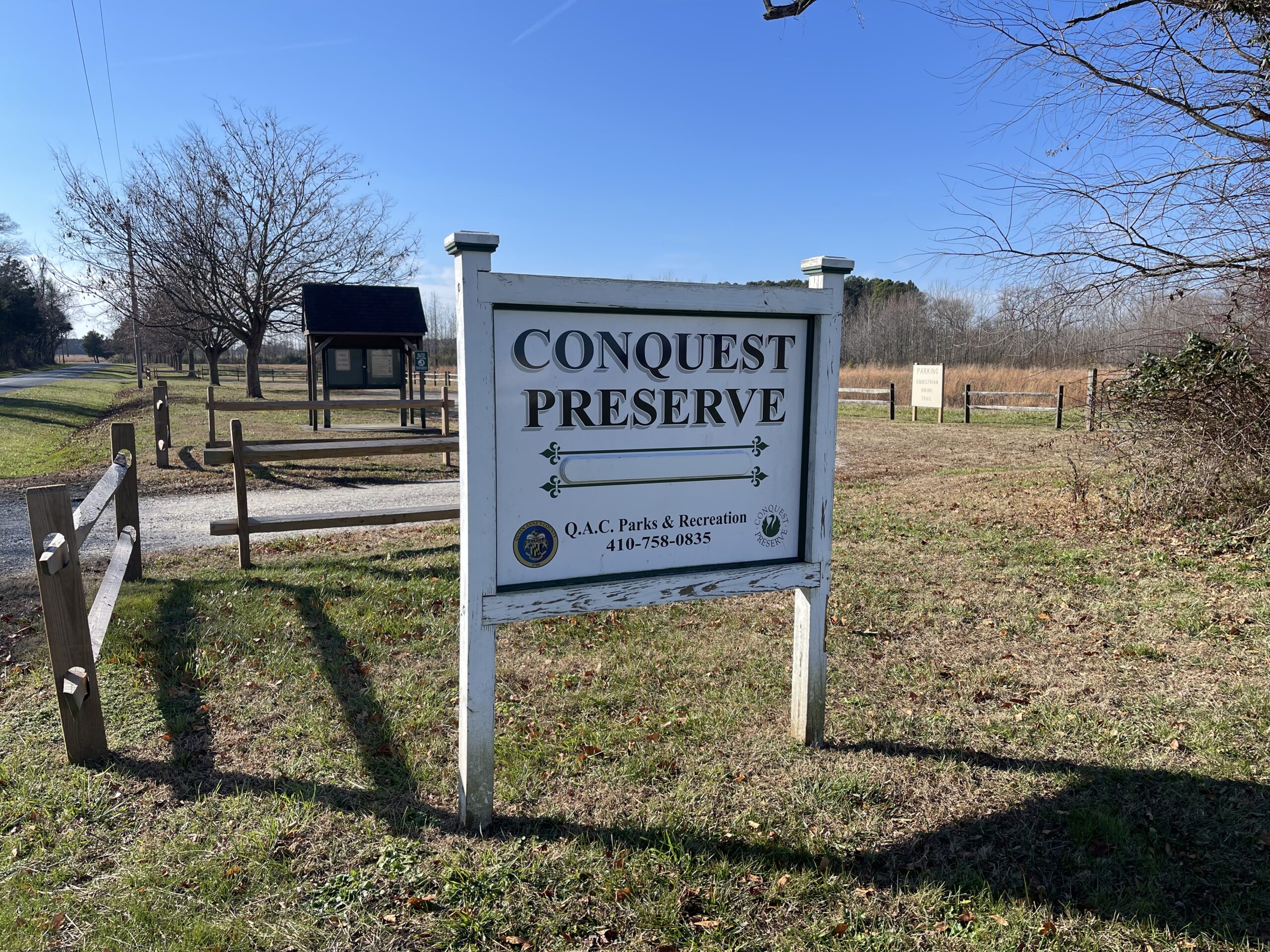
Dan Small, coordinator of Washington College’s Natural Lands Project, uses prescribed burning as one of the tools available to help maintain early successional grasslands on Maryland’s Eastern Shore
“The long-term efforts managing early successional habitat at our model farm, the River and Field Campus, have shown us that when you make a dedicated effort to set aside marginal cropland and install early successional habitat, birds will thrive.” – From Washington College’s Natural Lands Project website
Proof of that opening statement? Over the course of the last couple of years, at least 32 distinct coveys of Bobwhite Quail have been identified on and around Washington College’s River and Field Campus on the Queen Anne’s County side of the upper Chester River.
Summer surveys have recorded as many as 35 males singing their distinctive bobwhite calls. That’s according to Dan Small, coordinator of the college’s Natural Lands Project, under the umbrella of the Environment and Society department. Go big or go home!
Last week I wrote wistfully about a bygone era when evening summer rides through the Eastern Shore countryside would often be accompanied by the distinctive songs of Bobwhite Quail males. That soundtrack, due to lots of factors, eventually faded away.
This week though I write, more optimistically, about the success of the college’s efforts to return those sounds to the Eastern Shore landscape.
Since 2011, Small has been researching grassland birds such as quail. That research evolved into habitat management and conservation which led in part to creation of the Natural Lands Project in 2015.
The Chestertown college’s River and Field Campus of approximately 5,000 acres is known locally as Chino Farms. Dr. Henry Sears gathered several farms to create Chino in the latter half of the 20th century. Now known as the River and Field Campus, the diverse complex is owned jointly by Sears and the college. The total property includes 2,600 acres of farmland, 1,800 acres of forested woodlots, along with other wetlands and meadows.
“Dr. Sears,” said Small, “set aside 200 acres of that land in 1999 for experimental grasslands where he hosted classes and labs. The specific goal was to create a successful habitat of early successional grasslands attractive to quail. Now a thriving population occupies that area along with several other species that have been in decline including lots of different birds. On a summer’s day, it’s not unusual to hear 15 male quail calling in that area.”
 Partnering with Maryland’s parks, and other state open space programs, as well as conservation-minded private landowners, the Natural Lands Project aims to replicate that success up and down Maryland’s Eastern Shore. “We advise and provide funds to assist landowners in the process,” said Small.
Partnering with Maryland’s parks, and other state open space programs, as well as conservation-minded private landowners, the Natural Lands Project aims to replicate that success up and down Maryland’s Eastern Shore. “We advise and provide funds to assist landowners in the process,” said Small.
He noted that in cooperation and assistance with the program, public and private owners have converted more than 1,200 acres of mostly marginal farmland into early successional habitat. Those are habitats that emerge after clearing events such as cultivation, burning or mowing take place.
If those areas were left undisturbed and unmanaged for several decades, they would eventually evolve into forests. But management such as prescribed burnings hold them in that early successional grassland phase so preferred by quail and other species, including a number of sparrows.
”A lot of people are interested in helping,” said Small. “On eight of the properties we have converted in recent years, quail have shown up. For two years in a row we have seen successful breeding. We would like to create a corridor of habitat spanning several connecting farms. With proper management, we can have quail in the modern agricultural landscape.”
Small said the Natural Lands Project also contributes to efforts to improve water quality in the Chesapeake watershed by creating natural buffers that keep sediments and fertilizer run-off from entering waterways.
Partnering with Queen Anne’s County, the Natural Lands Project has helped convert 200 acres of farmland into grasslands between the Chester and Corsica Rivers. A parking area at the Conquest Preserve near Centreville invites visitors to walk trails winding through meadows and forests along the Chester. The meadows and five different managed wetlands attract birds, reptiles and mammals, and groups of people who like to watch nature in action. Members of the Talbot bird club, for instance, flocked there recently to add LeConte’s sparrows to their lifetime lists.
Conquest Preserve also includes an edible food forest with a variety of trees and shrubs designed to provide wild fruits for critters up and down the food chain.
“Momentum is growing,” said Small. “Farming operations are passing down to a new generation that is more conservation minded. They realize the benefits of not farming marginal land and saving on the cost of inputs, as well as the importance of providing habitat for birds and animals.”
Dennis Forney has been a publisher, journalist and columnist on the Delmarva Peninsula since 1972. He writes from his home on Grace Creek in Bozman.



Matt LaMotte says
My hope for preserving our precious Eastern Shore are buoyed thanks to the successful efforts of Washington College’s project. Non-profits like the Eastern Shore Land Conservancy and ShoreRivers provide valuable avenues for landowners looking to do the same. One of my now deceased father’s 1st jobs out of college, and after WWII, was as a cowboy at Chino Farms; and, he spoke of it constantly. He’d be so proud of the model example of natural lands habitat preservation that the property has become.